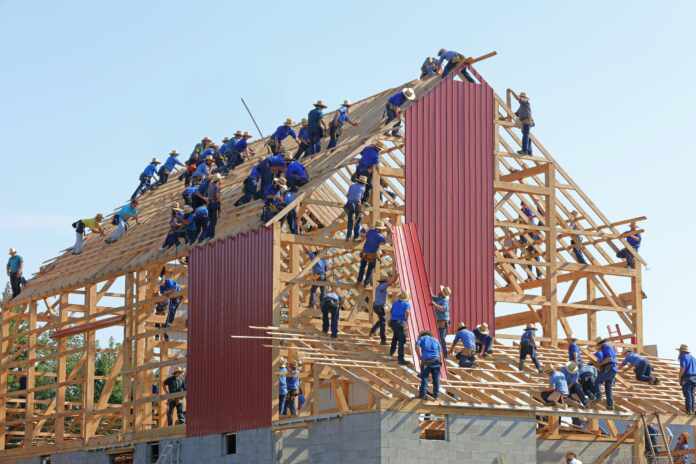Modular construction, also known as prefabricated or off-site construction, is a building method that involves constructing individual modules in a factory or off-site location and then transporting them to the final construction site for assembly. This process offers numerous benefits, including faster construction times, reduced labor costs, and improved safety. However, despite its many advantages, modular construction also has several significant disadvantages that must be considered before choosing this method of construction. In this article, we’ll explore the disadvantages of modular construction in more detail.
- Limited Design Flexibility
One of the biggest disadvantages of modular construction is the limited design flexibility. Since the individual modules are constructed in a factory setting, they must conform to certain size and weight restrictions to ensure that they can be safely transported and assembled on-site. This means that the design options for modular buildings are somewhat limited compared to traditional construction methods, which can be a disadvantage for architects and builders who prefer more creative or unique designs. As mentioned earlier, the design options for modular buildings can be somewhat limited compared to traditional construction methods. This is because modular buildings are constructed in sections or modules, and these modules must conform to certain size and weight restrictions to ensure safe transportation and assembly on-site. This means that there may be restrictions on the shape, size, and layout of the building. It can also be challenging to incorporate unique features, such as curved walls or unusual angles.
However, it’s important to note that modular buildings can still be designed to meet specific requirements, and customization options are available.Some manufacturers like boom & bucket offer a variety of standard modules that can be combined to create different configurations and layouts.Additionally, some manufacturers can produce custom modules that are tailored to a specific project’s needs.
- Transportation Costs
Another significant disadvantage of modular construction is transportation costs. Since the individual modules must be transported from the factory to the construction site, transportation costs can be significant, particularly for large or complex buildings. Additionally, the transportation of these modules can be challenging, particularly in urban areas where narrow streets, low bridges, and other obstacles can make it difficult to move large modules. However, it’s worth noting that transportation costs may be offset by reduced labor costs and faster construction times. Modular buildings can be assembled in a fraction of the time it takes to build a traditional building, which can result in significant cost savings.
- Site Limitations
Modular construction also has certain site limitations. Since the individual modules must be transported to the construction site, the site must be accessible by road, and there must be adequate space for the modules to be assembled. Additionally, the site must be level and stable to ensure that the modules can be safely and securely installed. These limitations can be problematic for construction sites in remote or difficult-to-reach areas, as well as for sites with uneven or unstable terrain.
These limitations can be problematic for construction sites in remote or difficult-to-reach areas, as well as for sites with uneven or unstable terrain. It may also be challenging to transport large modules through narrow or congested roads.
- Quality Control
Quality control is another significant disadvantage of modular construction. Since the modules are constructed in a factory setting, there is less oversight during the construction process, which can lead to lower quality or defective modules. Additionally, since the modules are transported to the construction site, they are exposed to potential damage during transit, which can further impact their quality and durability. This can result in increased maintenance and repair costs, as well as reduced longevity for the building.
To address these concerns, it’s essential to work with reputable manufacturers and builders who have a proven track record of producing high-quality modules. It’s also essential to conduct thorough inspections of the modules before and after transport to ensure that they are in good condition and meet the necessary standards.
- Cost Overruns
While modular construction can be a cost-effective method of building, there is also the potential for cost overruns. These cost overruns can be the result of transportation costs, site limitations, and quality control issues, as well as unexpected design changes or construction delays. Additionally, modular construction projects can be subject to supply chain disruptions, which can impact the availability and cost of materials and components.
- Limited Availability
Finally, modular construction may not be available in all areas or for all types of buildings. While modular construction is becoming increasingly popular, it may still be difficult to find a manufacturer or builder that can provide the necessary modules for a particular project. Additionally, some types of buildings, such as high-rise buildings or buildings with unique structural requirements, may not be well-suited for modular construction.
In conclusion, while modular construction offers numerous benefits, including faster construction times, reduced labor costs, and improved safety, it also has several significant disadvantages that must be carefully considered before choosing this method of construction. These disadvantages include limited design flexibility, transportation costs, site limitations, quality control issues, potential cost overruns, and limited availability. Despite these disadvantages, modular construction remains an attractive option for many builders and architects, particularly for projects that require fast and efficient construction. For more information about home builders be sure to check out Carlisle Homes.








